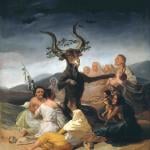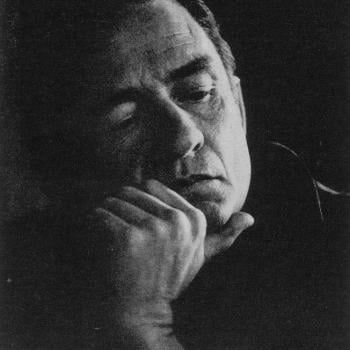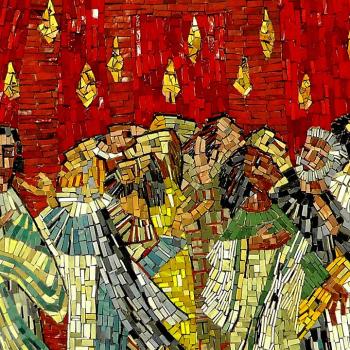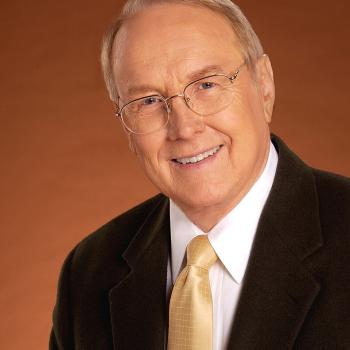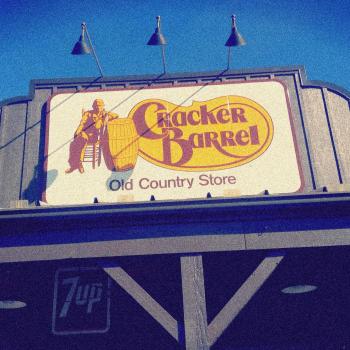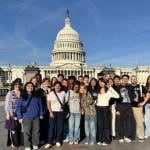The ink was scarcely dry on the newly released books lamenting young Americans’ inexorable rejection of religion before a new rash of survey data appeared proclaiming Gen-Zers’ new embrace of traditional Christianity.
In fact, the Barna Group notes in a report released earlier this month, churchgoing Gen-Z adults (that is, Americans born in 1997 or afterwards – and who are therefore 28 years old or younger) are more faithful in their church attendance than are church members of their parents or grandparents’ generation.
This news didn’t exactly catch me by surprise, because I had never thought that the rise of the nones would continue forever. I thought that researchers were probably overestimating the staying power of the trend toward secularism, and I assumed, based on historical trends, that religion would experience a revival. Even if the United States became considerably less religious, I never thought that it would look like Sweden; I always thought there would be substantial pockets of religion, especially in the Bible belt. Still, the speed with which this religious revival seems to be happening did catch me a bit off-guard.
Only a few weeks ago, I was reading Christian Smith’s new book Why Religion Went Obsolete, which is very pessimistic about the possibility of a resurgence of religion among younger generations. Before that, I read books such as Jim Davis and Michael Graham’s The Great Dechurching (2023) and Isabella Kasselstrand, Phil Zuckerman, and Ryan Cragun’s Beyond Doubt: The Secularization of Society (2023), which also drew on survey data to show that Americans’ turn away from religion had deep roots going back at least two or three decades and was not likely to be reversed. I saw similar projections in the data collected by Ryan Burge, the Pew Research Center, and PRRI. But now I’m seeing headline after headline about a religious revival among Gen-Zers.
So, how do we make sense of all of this? What is happening – and what is likely to happen in the future?
American Secularization Trends Have Always Been Followed by Religious Revivals
Historically, every period of secularization (that is, declining rates of religious adherence) in the United States has been followed by a period of religious revival. There were good historical reasons to expect that the rise of the nones in the 2010s would eventually be at least partly reversed by a religious revival.
I can identify at least four different historical eras of American secularization that were followed by a revival of Christian fervor.
The first of those moments of secularization was specific to New England, and it occurred in the late seventeenth and early eighteenth centuries. The Massachusetts Bay Colony was founded by devout Puritans in 1630, but the second generation was far less fervent in their faith. By the 1660s, fewer than half of Boston residents were church members. Anxiety about the decline of religious devotion in the colony led some Puritans to believe that Satan was attacking the colony, which probably contributed to their willingness to believe reports that there were witches making trouble in Salem, despite the flimsy testimony on which these reports were based. Some of the Puritan leaders involved in the Salem witch trials expressed remorse for acting on these reports, but that still didn’t solve the problem of religion’s decline. At the end of the seventeenth century, Jonathan Edwards’s grandfather, Solomon Stoddard, became a leading advocate of a “Halfway Covenant” that would give unsaved people the opportunity to take the Lord’s Supper and have their children baptized, in the hope that perhaps the sacraments would contribute to their conversion.
But instead, there was a religious revival known as the First Great Awakening. In Northampton, Massachusetts, where Jonathan Edwards was a minister, 25 percent of the town’s residents experienced a born-again conversion in only six months. The revival then spread to other towns, with other ministers becoming involved.
Yet the effects of the revivals of the 1730s and 1740s lasted for only a generation. By the 1770s, religion seemed to be at a low ebb once again. Only 16 percent of the American colonists were church members at the time of the Revolutionary War, and even some of those were of dubious orthodoxy. In Boston, for instance, the most liberal Arminian Congregationalists, such as John Adams, were leaning toward Unitarianism. And after the Revolution, Christian orthodoxy seemed for a while to be on the wane. Workers in Philadelphia organized deist clubs. And Yale College in the early 1790s was “in a most ungodly state,” according to Lyman Beecher. “The college church was almost extinct. Most of the students were skeptical, and rowdies were plenty. . . . Intemperance, profanity, gambling, and licentiousness were common.”
But then another revival swept the nation, starting with the revitalization of Christian orthodoxy to Yale with the presidency of Theodore Dwight, who emphasized the teaching of Christian apologetics. Every major New England college began requiring classes in Christian evidences. And across the nation, a series of revivals resulted in thousands of conversions. By 1850, 34 percent of Americans were church members. Historians have commonly called this period the “Second Great Awakening.”
After the Civil War, the effects of these revivals dissipated. Immigration from southern and eastern Europe made the United States less Protestant. And many educated northerners who remained Protestant embraced a liberal theology that, at its most extreme, questioned the historicity of biblical miracles and even the deity of Christ. A few prominent Americans, including Mark Twain and Andrew Carnegie, abandoned religion altogether. Robert Ingersoll, a Republican orator, became an evangelist for agnosticism, a newly coined term that reflected some Americans’ belief that in the age of Darwin, nature no longer seemed to require a creator – and therefore, God might not exist.
America did not become uniformly secular. Although northern colleges embraced Darwinian evolutionary theory and liberal Protestantism’s historical criticism of the Bible, they did not abandon religion altogether. Instead, they continued to hold chapel services, and they proclaimed the value of a liberal religious faith for American democracy and world peace. Church membership rates were actually higher in the 1890s and 1920s than they were in the 1850s. But the intellectual trends of the time indicate that traditional religion was under threat. (Philip Jenkins’s recent post on how educated Americans of the 1890s imagined the future of religion demonstrates just how far from the traditional evangelicalism of the antebellum era the writers of the late 19th century had strayed).
The “lost generation” (that is, those born between 1881 and 1900) was unusually skeptical of religion. Shocked by the horrors of World War I and the apparent senselessness of the killing, many of the writers of this generation – Sinclair Lewis, John Dos Passos, Ernest Hemmingway, and F. Scott Fitzgerald – distanced themselves from both organized religion and from liberal Protestantism’s faith in American ideals. A few, like Lewis, rejected belief in God altogether. Others simply became lapsed Catholics (or nominal Protestants), no longer believing that religion had the answers to the world’s questions. Amid the heady materialism of the 1920s, it was easy for urbanites to distract themselves with sex, movies, or – as was the case for many of the most well known writers of the era – illegal whiskey, imbibed while chain-smoking. While there was a thriving fundamentalist movement in the era, it was lampooned by urban editorialists – especially by the atheist H. L. Mencken.
But World War II – and, to an even greater extent, the Cold War – brought religious revival to America. Billy Graham became a national celebrity, with appearances at the White House and on the cover of Time magazine. If the “lost generation” was unusually irreligious and cynical, the next generation – that is, those born between 1901 and 1925, a cohort that included Graham – was unusually patriotic and devoted to church. During the late 1940s and 1950s, when the members of this generation were raising kids, church attendance rates soared to the highest recorded levels in American history, with more than 60 percent of Americans joining a church by 1959.
Then came another wave of secularization during the 1960s, followed by a religious revival in the 1970s and 1980s. In the mid-1960s, amid plummeting church attendance rates and the sudden ascendancy in progressive regions of eastern-flavored non-Christian religious movements (such as Hare Krishna), some of the leading scholarly books on religion, such as Harvey Cox’s The Secular City, were saying that the future of America was secular and that churches would have to adjust. By the late 1970s, after the “year of the evangelical” in 1976, academics were no longer so confident that secularization would eclipse Christianity. After all, the bestselling nonfiction book of the decade was not some secular advice book, such as The Joy of Sex, but Hal Lindsey’s The Late, Great Planet Earth. And by the 1980s, the worry in religion departments was not that religion would disappear; it was that “fundamentalism” would win out.
So, if American religion experienced a decline in the early 21st century, there was every reason to believe that eventually that trend would be reversed in a revival of Christianity.
But beyond that, I think that we can conclude something else from the historical pattern of the religious revivals that followed each respective wave of secularization: The type of Christianity that became dominant in each period of religious revival was different in some ways from the dominant form of Christianity that preceded it.
The Theological Changes That Religious Revivals Bring
When a widespread recovery of religious fervor or adherence occurs, the people who become newly religious do not simply convert to whatever form of Christianity their parents’ generation had abandoned. Instead, they embrace a form of Christian faith that is uniquely suited to the needs of the current moment.
Nathan Hatch argued in his The Democratization of American Christianity that American Christianity has continued to remain strong and experience revivals to a much greater degree than Europe has precisely because of the free religious marketplace’s capacity to adapt to the demands of consumers. If a new generation is attracted by Calvinist theology, a free religious marketplace will allow Calvinist churches to flourish. If a new generation is repulsed by Calvinism and attracted by Arminianism, the new churches that emerge in a free religious marketplace will be Arminian. Because there is full freedom of religion in America, religion will never die out in the United States; it will always find a way to reinvent itself in response to prevailing cultural trends.
That seems to be what has happened at each moment of religious revival in the United States. After a generation rejects a particular model of conventional religion, religion is reshaped to meet a new set of demands – and a revival of religion occurs. The process happens organically and, for the most part, without direct design, so it’s easy to overlook. But when we look back at moments of religious revival, we can see this phenomenon at work.
The New England religious revivals of the 1730s and 1740s did not simply repackage traditional Puritan orthodoxy for a new generation. Instead, they propagated a Reformed evangelicalism that was less centered on ecclesiastical authority and that gave much greater emphasis to a personal experience of salvation – and the personal assurance that came from knowing for certain that one was saved. The theology of the First Great Awakening was still Calvinist, but it was a form of Calvinism that was reshaped for a world after Christendom. And it could be fiercely anticlerical at times, as Gilbert Tennent’s sermon “The Danger of an Unconverted Ministry” indicated.
The 17th-century Puritans had believed in a close connection between church and society, and the Christian theology they proclaimed therefore gave greater emphasis to church and sacrament. But the 18th-century Reformed evangelicals were focused much more on the individual. The differences may not have been fully perceptible at the time, but in retrospect, historians have been able to label the 18th-century revivals as the beginning of American evangelicalism, while 17th-century Puritan theology was in some ways the last gasp of Christendom.
Similarly, the revival of religion that occurred at the beginning of the 19th century was not simply a continuation of the type of Christianity that had existed before the American Revolution. The denominations that were most prominent in America before the Revolution – such as the Congregationalists and the Anglicans – experienced relative declines in membership in the 19th century, while the denominations that grew most quickly in the 19th century (Methodists, Baptists, and Disciples of Christ) had been fledgling enterprises or nonexistent before the Revolution.
Their theology was also different. Before the Revolution, American Christianity was heavily influenced by Calvinism. After the beginning of the 19th century, American Christianity became heavily Arminian, with an emphasis on unregenerate sinners’ ability to freely choose to accept Jesus. American Christianity before the Civil War was overwhelmingly evangelical, but it was an evangelicalism that would have been barely recognizable to Reformed Protestants of the 1730s and 1740s – or, if they had recognized it, they might have called it heresy.
Likewise, the religious revival of the 1970s did not simply resurrect the mainline Protestantism or pre-Vatican II Catholicism of the 1950s. Instead, the rapid growth of evangelicalism in that decade was heavily centered on charismatic Christianity, premillennial dispensationalism, and, by the end of the decade, a concern about American moral decline that led to an alliance with Ronald Reagan’s campaign.
Presumably, the smiling black-robed Presbyterian pastor who greeted President Dwight Eisenhower and his wife after church each Sunday during the 1950s or the Methodist bishop who presided over the National Council of Churches during the decade would not have predicted any of this, because in the 1950s, Pentecostalism was still on the margins of American life, and premillennial dispensationalism was not well known outside of fundamentalist circles. Nor would most people in the 1950s have imagined Jerry Falwell – who was then presiding over a small congregation of independent fundamentalist Baptists meeting on the sticky floors of the Donald Duck Soda bottling company in Lynchburg, Virginia – securing a private White House meeting with the president after successfully registering millions of new Republican voters.
In the case of each religious revival, the Christianity of the preceding era really did experience a permanent decline. The Puritan churches of New England really did disappear amidst the evangelicalism that emerged in the 18th century. The Arminianism of the 19th century really did prompt the marginalization of Calvinist theology in much of American Christianity for nearly two centuries. The evangelical revival of the 1970s and 1980s was accompanied by what seems to be a permanent decline in mainline or liberal Protestantism.
So, what about the current religious revival that we seem to be experiencing? What will it bring – and what forms of Christianity will disappear in the midst of this revival?
The Gen-Z Religious Revival
The Gen-Z religious revival is still in its very early stages, so it’s difficult to say exactly how it will continue to develop. But based on current trends, I think that we can say that:
- Christianity for Gen-Zers will be overwhelmingly charismatic or Catholic. Half of all Gen-Z and millennial churchgoers attend charismatic churches, according to a 2023 survey. That shouldn’t be a surprise, because globally, Pentecostal and charismatic Christianity is much stronger than it is in the United States, and one would have assumed that it would only be a matter of time before American Christian trends would start to echo those in other parts of the world.
But the rate of Gen-Zers’ conversion to Catholicism is more surprising. A Harvard study found that the percentage of all Gen-Zers (not just the percentage of churchgoers of this generation) who identified as Catholic increased from 15 percent in 2022 to 21 percent in 2023 – a 40 percent increase that suggests an astonishingly high rate of conversion.
- Christianity for Gen-Zers will be overwhelmingly conservative on the culture-war issues. A 2023 survey showed that Gen-Z and millennial Christians who were charismatic were significantly more likely than non-charismatic evangelical Christians of their generation to favor laws banning gender-affirming care or otherwise restricting LGBTQ+ rights. Charismatic and Pentecostal churches have also given Trump his highest levels of support, with members of the Assemblies of God now more likely than even Southern Baptists to be Republican.
And among Catholics – who, for the last sixty years have been more politically moderate, on average, than evangelicals – the youngest cohort of priests are more politically and theologically conservative than any group of priests since the early 1960s. Young Catholic converts are overwhelmingly conservative, and both the clergy and laity in the church are likely to continue to shift to the right in the next few years, as the share of Catholics who are Gen-Zers continues to grow.
Fifteen years ago, the prevailing wisdom was that Christian millennials would be much more progressive than their parents – more tolerant on LGBTQ+ issues and more interested in preserving the environment. That didn’t quite play out as expected, but regardless of the merits of that prediction, the evidence now strongly suggests that Gen-Z Christians will be just as culturally conservative as any of their parents – and quite possibly, far more so. American Christianity has been turning to the right for several years, but it’s poised to become even more conservative with the rise of the Christian Gen-Zers.
- Gen-Z Christianity will be unusually male-driven. Anecdotal evidence from multiple news sources suggests that most of the Gen-Z converts to Christianity are men. And statistical evidence suggests that among Gen-Z churchgoers, men outnumber women – the first generation in American history for which this is true. Traditionally, women have outnumbered men in American churches, and that’s still the case for older generations. But as Gen-Z Christians have gravitated toward politically conservative churches – and as college-aged women have overwhelmingly identified with progressive politics, while college-aged men have become more conservative – it appears that for the youngest generation of adults, Christianity has become more attractive to young men and less attractive to young women.
- Even with the religious revival going on, Christianity will still be a minority option (though a popular minority option) for Gen-Zers. As of last year (after the Asbury revival and other signs of an uptick in Gen-Z Christian affiliation), 24 percent of Gen-Z adults reported attending church weekly – but 53 percent said they never attended at all. Maybe this year’s numbers will be higher, but unless we see a massive sea change in attitudes on an unprecedented scale, I think that the future of this revival will still leave us in the situation that Tim Keller noted in 2008 – that is, the country is getting both more religious and less religious at the same time. Fewer Americans will identify as Christian, but those who do identify as such will be more fervent in their faith.
That will actually strengthen Gen-Z Christianity, because the Christian option will remain just enough of a minority option to make it seem attractively countercultural, while still retaining enough followers to maintain its viability. In other words, millions of Gen-Zers will be able to embrace Christianity en masse while still believing that they are part of a persecuted minority that is under threat.
So, what will American Christianity look like in another decade or so, after this religious revival among Gen-Zers reaches a peak? If current trends continue, the proportion of American Christians who are mainline Protestants will become vanishingly small, and non-charismatic evangelical churches will likely shrink considerably – including both the progressive and conservative wings of non-charismatic evangelicalism. Evangelicalism will be dominated by Pentecostal and charismatic voices, who will be the leaders in Christian Right politics. And American Catholicism – like global Catholicism – will become stronger and far more outspokenly conservative.
If the Christian Right of the 1980s was driven by Baptists, the Christian Right of the late 2020s and beyond will be driven by conservative Catholics and charismatic or Pentecostal Protestants. Among highly educated whites, Catholicism will be the more popular of the two options, while among working-class whites, Hispanics, and Black Protestants, non-denominational charismatic Christianity will be attractive.
But regardless of which option Gen-Z Christians select, the culture wars will continue, because both conservative Catholicism and charismatic / Pentecostal evangelical Protestantism have embraced a set of values that are sharply at odds with the secularism that unchurched Gen-Zers still hold.
The Causes of the Gen-Z Religious Revival
Previous revivals of religion in the United States have often had an identifiable catalyst. The Cold War was at least partly the cause of the religious revival of the 1950s, for instance.
So, what is driving the current religious revival among Gen-Zers?
I suspect it’s partly the emotional scars of the COVID pandemic. When I ask my freshman college students what the most historically significant event of their lifetimes was, they don’t say it was the election of Donald Trump. They don’t mention the rise of AI. Instead, they talk about COVID.
We’re probably only beginning to learn how traumatic COVID was for Gen-Z. First-year college students today were in 8th grade when COVID shutdowns forced them into isolation for months – or, in some states, even longer. At one of the most vulnerable times of life, Gen-Zers were cut off from in-person contact with others, and they have been lonely and longing for community ever since.
COVID left many Gen-Zers feeling that the gods of our contemporary secular culture failed them. Science failed them, because the scientific experts told them to isolate from others – and they suspect that was wrong. The economy failed them. Education failed them. Liberalism failed them.
Secular answers to this collective generational trauma have focused largely on therapy. During the 2023-2024 academic year, the Healthy Minds Study (a massive national study that was based on more than 100,000 responses from students from nearly 200 colleges and universities) found that 78 percent of students agreed with the statement, “I currently need help for emotional or mental health problems such as feeling sad, blue, anxious, or nervous” – and 36 percent were getting mental health counseling or therapy (up from 19 percent in 2007, when the Healthy Minds Study began).
But whatever value there might be in therapy, a lot of Gen-Zers are finding that it cannot take the place of community. And it also cannot satisfy the innate human need for a connection with God.
And so, millions of Gen-Zers are now looking once again at Christianity and the church – and their decisions of faith are changing the face of American Christianity.



